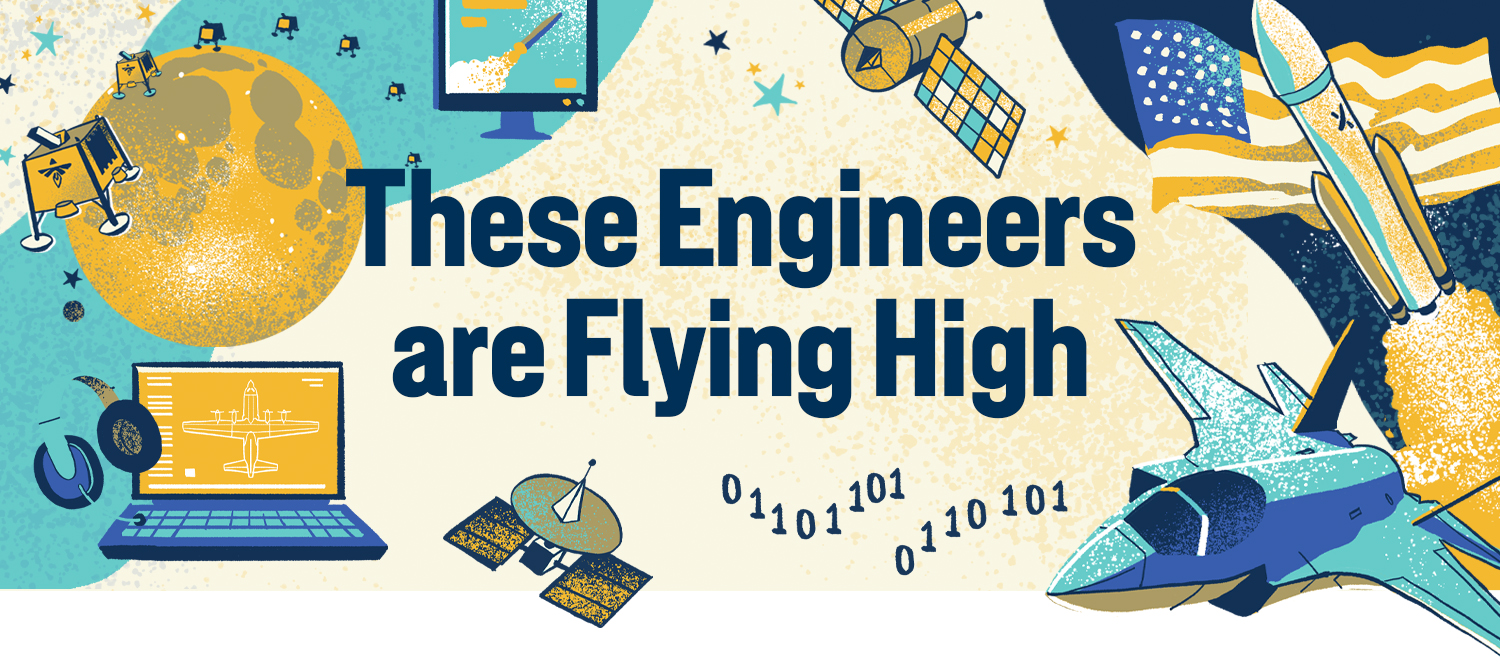
In the air and among the stars, College of Engineering alumni are working every day at the world’s leading aerospace organizations to innovate, fly safer, and travel farther.
(text and background only visible when logged in)
Whether they’re exploring space or supporting key national defense operations, Georgia Tech engineers have influence and significant responsibility at the world’s biggest and most respected aerospace companies. We asked a few of them to tell us about their work and what they see just over the horizon.
(text and background only visible when logged in)
(text and background only visible when logged in)
Sarah Walker
Director, Dragon Mission Management
SpaceX
AE 2009, M.S. AE 2011
My job is three-fold. Externally facing, I’m expected to be something of a bridge or ambassador to our Dragon customers, including NASA and private entities. My goal is to really understand their needs for a mission we will execute for them and SpaceX’s needs as we work hard to revolutionize the industry — then find a way to achieve both. I often find myself advocating for our customers’ interests to SpaceX internal teams, while simultaneously advocating for SpaceX’s interests to our customers.
Internally, I manage a high-performing team that must move quickly, make sound decisions, and ultimately execute our contracts and missions safely, ensuring each mission accomplishes all of its objectives.
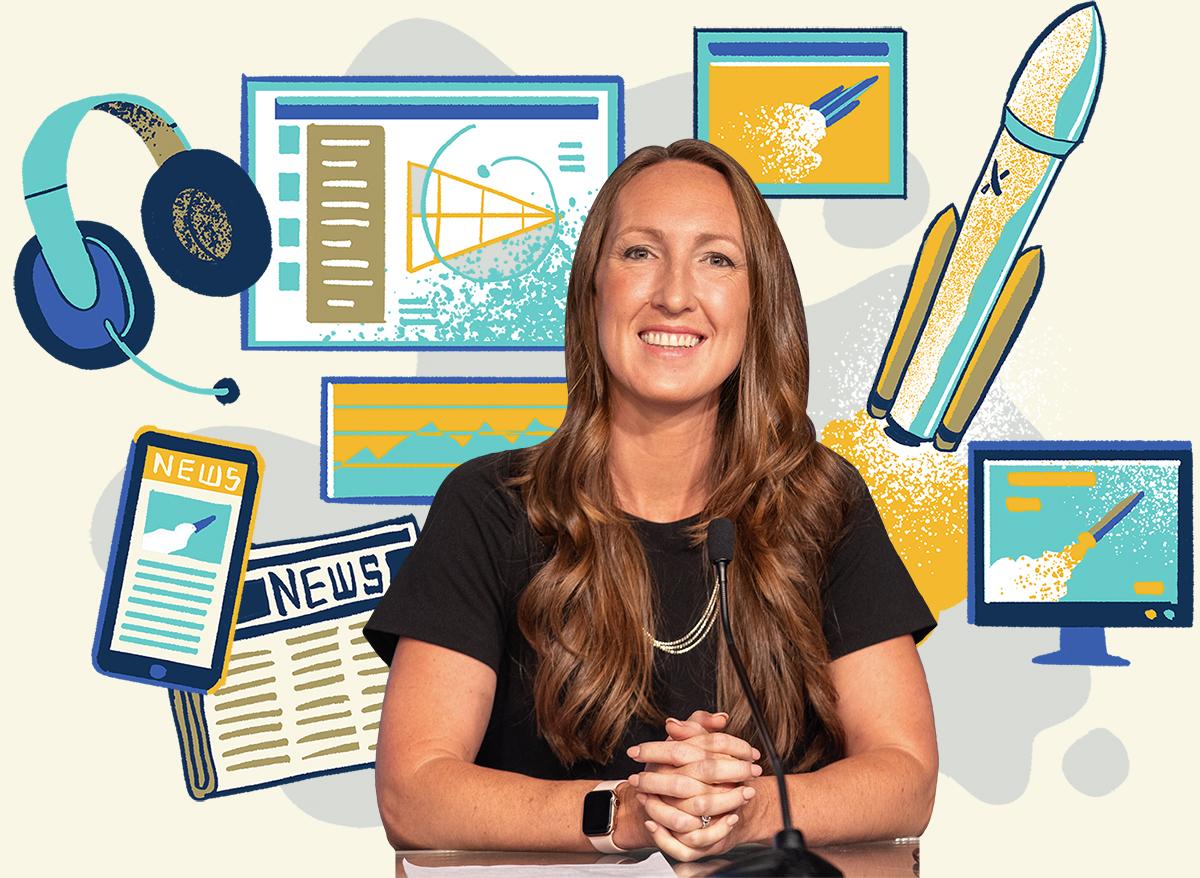
Another fun part of my job is speaking to the public at our press briefings before and after Dragon launches. I get to be on console in Mission Control for launch, but there’s a part of me that thinks the fun part is before and after liftoff. I get to share to a room full of interested journalists (and hopefully a few kids watching at home — at least my own, anyway!) all about the things that make each Dragon mission so exciting and important. I was a cheerleader at Georgia Tech, and sometimes it feels like I get to put a little of that spirit to use in this part of my job.
Why is that work interesting to you?
This kind of work was really intimidating at first. I studied aerospace engineering at Tech, not human studies or public speaking or negotiation strategy! I didn’t expect so much of my job to hinge on empathy and E.Q. — and I expected there to be a lot more calculus! But the calculus of human motivation and team dynamics to accomplish a shared goal of the highest stakes has become incredibly interesting to me over the last several years.
(text and background only visible when logged in)
I used to say that if I could live in any other time in history, it would be the Apollo era. But I’m realizing that’s not true anymore. Those missions were amazing. They inspired the whole world. But the things I get to be a part of today are just as amazing.
SARAH WALKER
(text and background only visible when logged in)
What are you most excited about right now in space?
What excites me the most is how much the work we’re doing in this industry actually makes a difference. I used to say that if I could live in any other time in history, it would be the Apollo era. But I’m realizing that’s not true anymore. Those missions were amazing. They inspired the whole world. But the things I get to be a part of today are just as amazing.
I’ve gotten to experience so many game-changing breakthroughs at SpaceX in the span of my own small career. When I joined, SpaceX had launched only four rockets to orbit without exploding. Now we launch more things to space every year than the rest of the world combined. It’s insane! To my kids, watching a rocket launch from our porch in El Segundo is just another Tuesday night.
Another was landing rockets and reusing them. It’s the inflection point in what some might call the second space age. I vividly remember when that had literally never been done (not even a decade ago), and now my kids ask me why people used to just throw rockets away after flying once! But bringing them back feels like something we JUST figured out how to do. And it’s making space so much more accessible to more of the population than it ever has been before. Every little thing I get to work on feels like it moves the needle on something that really matters, and that is incredibly rewarding.
(text and background only visible when logged in)
(text and background only visible when logged in)
Philip June
Vice President and Program Integration Officer for Space Mission Systems
Boeing Defense, Space and Security
ME 2006
I serve large satellite program management leaders and their teams. In general terms, I work to help our programs run more efficiently from proposal through launch. Our portfolio has many programs with billions of dollars of business from the commercial to government sectors. I help manage risks, issues, and opportunities and identify new ways of working through the use of generative AI, data analytics, and other tools. My goal every day is to help one leader or one teammate be better at their work by removing a roadblock or offering my perspective.
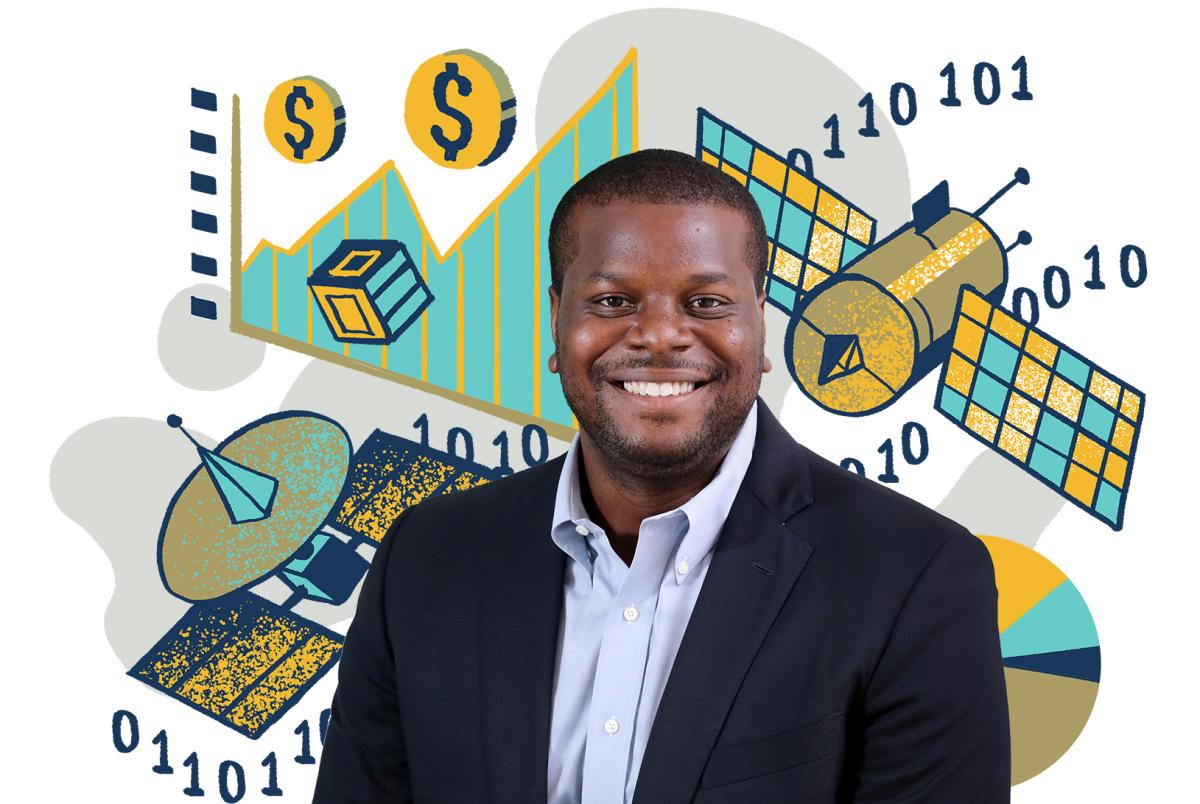
Why is that work interesting to you?
Space has long been a passion of mine. I’m sure that I wasn’t the only young, budding engineer who watched Space Shuttle launches and looked up at the sky with awe and wonder. I still feel that child-like wonder and curiosity when I learn something new from all the brilliant people I have a privilege to work with every day. That keeps me excited about what I do. It’s a real blessing and a privilege to grow up and do what you have passion for and have had lifelong interest in. I’d also add that being a leader working in space is the cherry on top. Leadership has also been a passion of mine since becoming a first-line leader over 15 years ago. I couldn’t ask for a more fulfilling career.
What are you most excited about right now in space?
I am most excited about all the investment and innovation driving space forward. After many years of development and partnerships and new business models, we are starting to see innovation not only in products but also in business models and the commercialization of space. It’s an exciting and challenging time to be in the business. Ultimately, I believe that what we are experiencing now will push humanity forward in a meaningful way. If you love all things space and aeronautics, there’s no better time to be alive.
(text and background only visible when logged in)
What we are experiencing now will push humanity forward in a meaningful way.
PHILIP JUNE
(text and background only visible when logged in)
(text and background only visible when logged in)
Farah (Khemani) Zuberi
Director of Spacecraft Mission Management
Firefly Aerospace
AE 2012
My primary job is to ensure mission success for our lunar and spacecraft payload customers. I started as a payload integration manager at Firefly four years ago when Firefly won its first NASA Commercial Lunar Payload Services (CLPS) contract. I partnered with all subsystem leads to develop a vehicle with compatible payload interfaces and then worked to integrate, test, and operate the lunar payload instruments on our first Blue Ghost lunar lander. It successfully landed and completed its full two-week mission on the moon in March. Now, I lead a team of payload integration managers who support several payload customers — NASA and commercial — for our various spacecraft missions. We have been awarded three NASA CLPS lunar missions thus far.
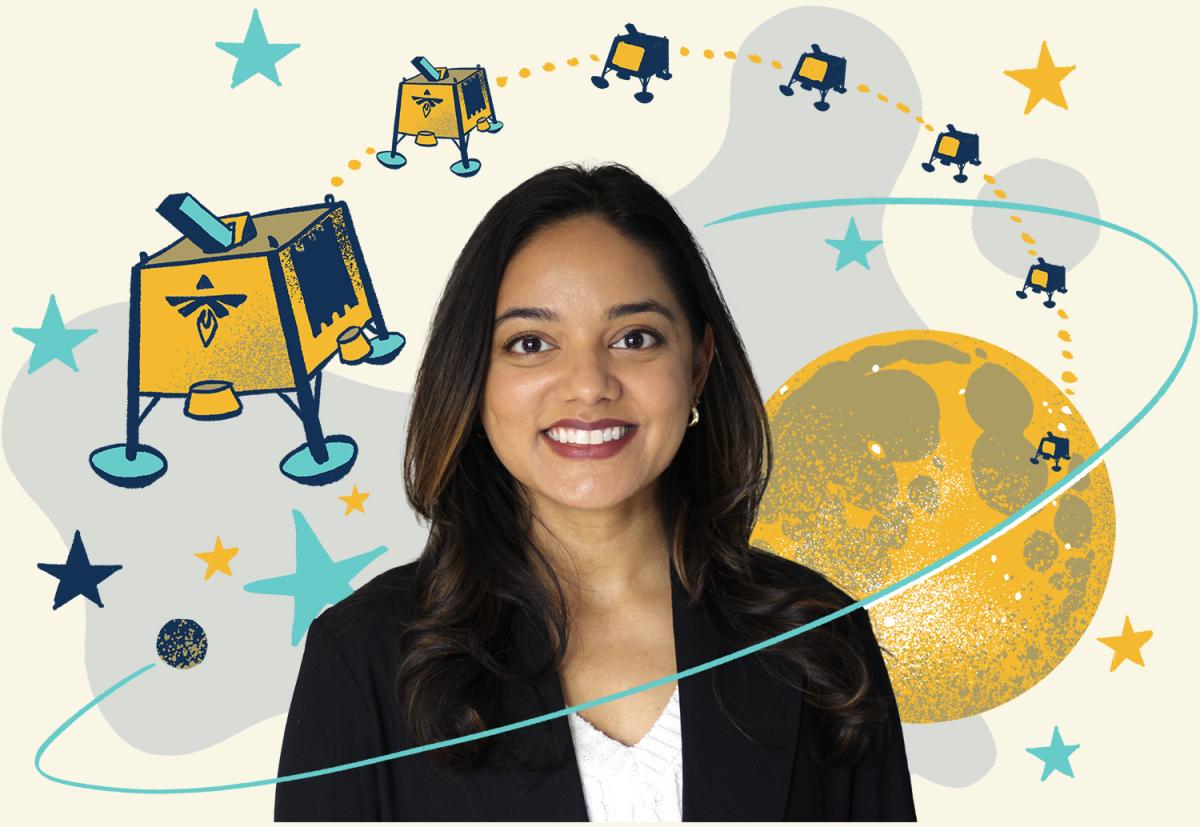
I work to send and operate science experiments on the moon, and it is as cool as it sounds! The projects I am working on support the efforts to get humans back to the moon and beyond.
FARAH ZUBERI
Why is that work interesting to you?
I work to send and operate science experiments on the moon, and it is as cool as it sounds! The projects I am working on support the efforts to get humans back to the moon and beyond. Space exploration has always been a passion of mine, so making an impact in this field is really important to me.
What are you most excited about right now in space?
Increased public interest in space means there are more initiatives supporting advancements in space exploration, so there is much to look forward to! Before our recent Blue Ghost mission, it had been over 52 years since the U.S. successfully landed and operated as intended on the moon. This mission’s 10 payload instruments included science experiments and technology demonstrations, which collected lots of data that is currently being processed. I am excited to see all of the science advances stemming from the successes of this mission and how they drive change for future exploration missions.
(text and background only visible when logged in)
(text and background only visible when logged in)
Roderick McLean
Vice President & General Manager – Air Mobility & Maritime Missions
General Manager – Marietta, Georgia, site
Lockheed Martin
M.S. EE 1993
I oversee the C-130, C-5, and P-3 programs, including profit and loss, program execution, quality, and performance. This role is particularly exciting because I have the opportunity to work on some of the most iconic and enduring aircraft in the world. For example, the C-130 Hercules tactical airlifter program is the longest-running military production program in history, with over 2,700 aircraft produced and still in production today. We are currently producing the C-130J Super Hercules, which is the most advanced version of the airlifter. It’s flown by operators in 23 nations in support of 20 different mission requirements. Hercules is a worldwide workhorse whose roots are firmly planted in Georgia — just a few miles from the Georgia Tech campus.
I’m also the general manager of the Marietta site, which means I’m responsible for the entire site and all the activities that take place here. It’s home to almost 6,000 employees and a diverse range of programs and activities — including production of the F-35 fighter jet’s center wing, stealth coatings for the F-35, and support for the F-22 Raptor fighter jet. We also have a growing workforce with our Advanced Development Programs organization — also known as Skunk Works™ — that is driving innovation and growth in some of the most advanced areas of aerospace and defense.
It’s a challenging role, but it’s also incredibly rewarding to see the impact that our work has on the world.
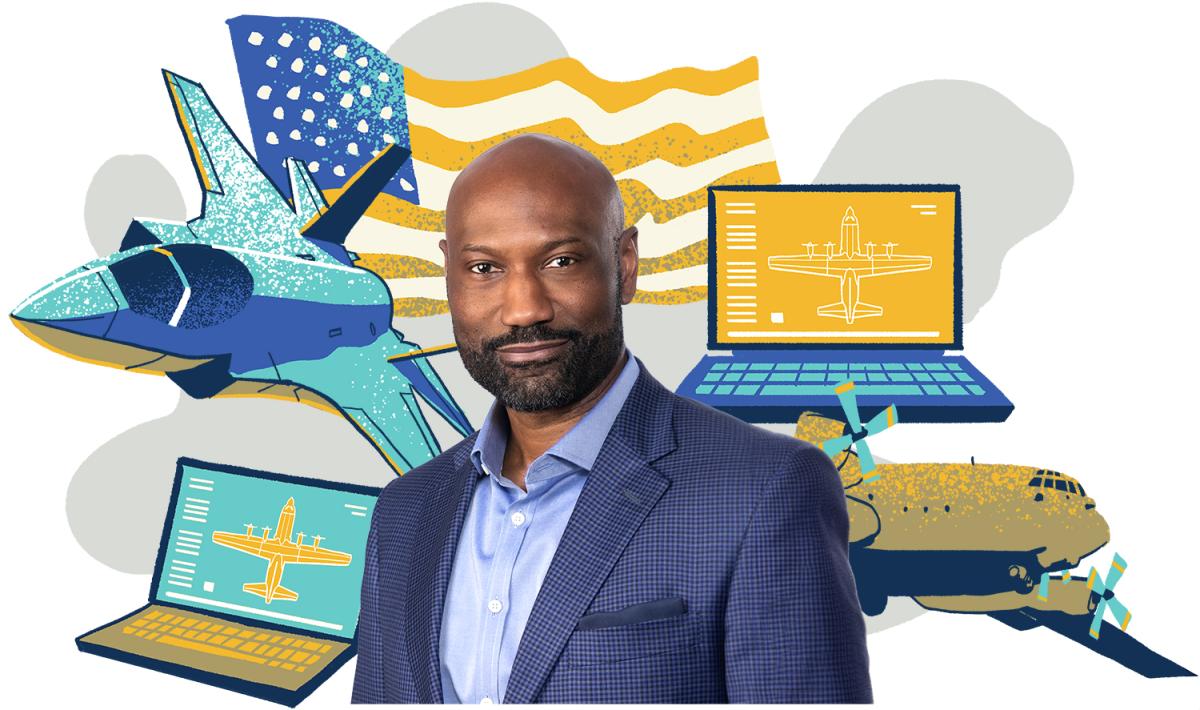
Why is that work interesting to you?
As an engineer, I find my work fascinating because I’m still very much involved in the product itself, even though I’m not doing design work. The reason I’ve worked at Lockheed Martin for 31 years is because of the mission, the products we develop, and the importance of providing humanitarian aid while protecting freedom and sovereignty — not just for the U.S., but also for our allies. The C-130 plays a critical role in delivering aid and support across the globe as one of Lockheed Martin’s key capabilities in providing 21st century security. Knowing that the airplanes we build go into harm’s way to support mission requirements for our U.S. and allied operators gives my work a sense of purpose and motivation.
I’m proud to be a part of an organization that’s dedicated to making a difference. ... It’s a sense of pride, purpose, and fulfillment that comes from knowing that my work is contributing to something bigger than myself.
ROD MCLEAN
I have the opportunity to see the products we develop come to life, and I know that these aircraft are used to make a positive impact in the world. Whether it’s providing humanitarian aid or supporting our troops, I’m proud to be a part of an organization that’s dedicated to making a difference. It’s a feeling that’s hard to describe, but it’s a sense of pride, purpose, and fulfillment that comes from knowing that my work is contributing to something bigger than myself.
What are you most excited about right now in aeronautics?
One of the most significant advancements is in design approaches. Modern design tools allow us to work concurrently across organizations to design products in the digital space with precision and accuracy. This significantly reduces the time and speed to go from concept to production. We’re now able to design a variety of aircraft types — from supersonic and hypersonic vehicles to uncrewed systems — and be more responsive to customer needs. It’s the ultimate efficiency, which is what all engineers and customers strive to achieve.
We’re also working on advanced systems, such as the X-59 supersonic aircraft, which is developed in partnership with NASA to assess the potential for supersonic flight over land. This project is a great example of how digital engineering is enabling us to design and build complex systems more efficiently. Team members in Marietta have been able to design and contribute to the X-59 project remotely, using digital engineering tools to collaborate with colleagues in other locations.
The use of digital engineering tools allows us to work in a more dispersed manner, while still maintaining alignment and collaboration across teams. This provides opportunities for engineers to be involved in even more exciting projects, both unclassified and classified. The creation of a digital ecosystem around the aircraft is phenomenal in enabling individuals and suppliers to be more impactful and innovative in their design approaches and involvement.
(text and background only visible when logged in)
(text and background only visible when logged in)
Related Stories
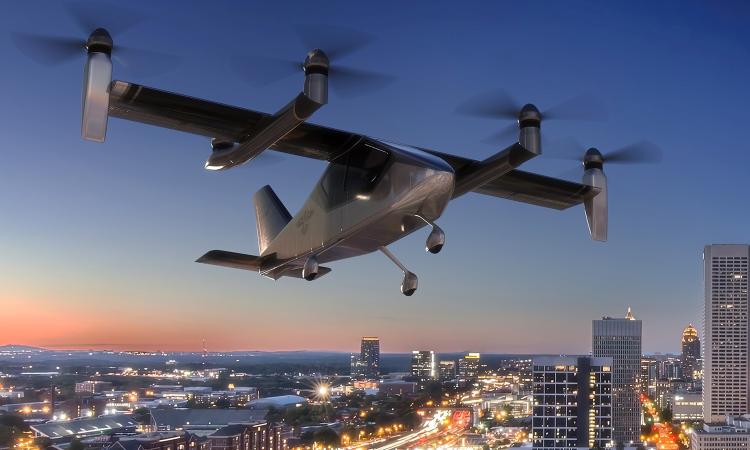
Engineering 21st Century Flight
The new ideas and emerging designs that will carry us into the future thanks to the work of Georgia Tech engineers.
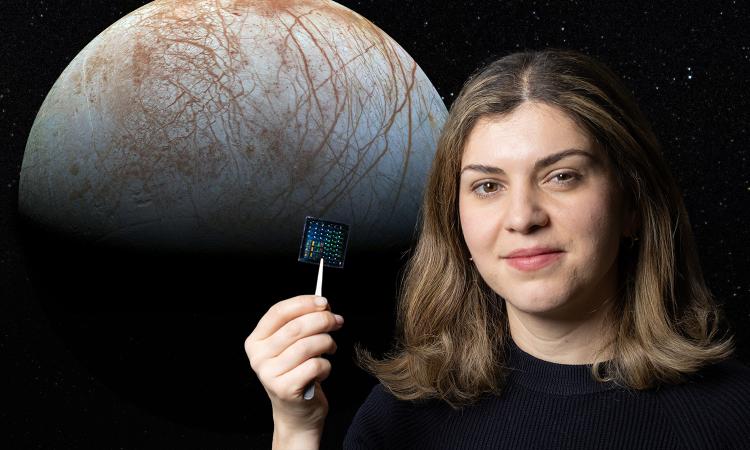
Space: The Current Frontier
Our engineers have the solar system covered, with projects hundreds — or millions — of miles from home.
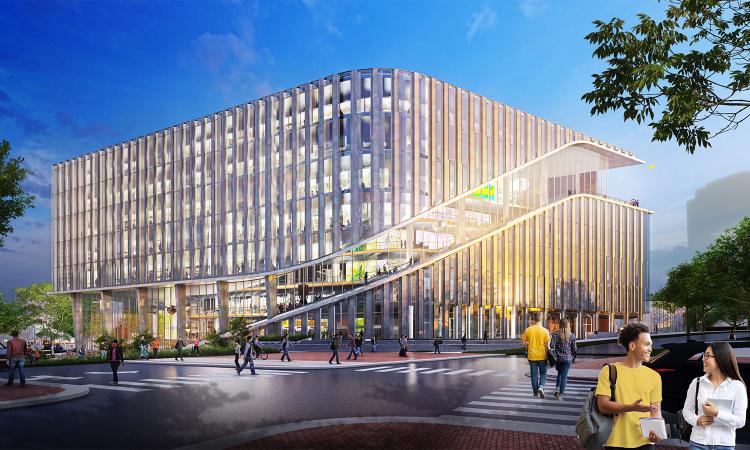
Building for the Future
A top program needs top facilities. Why it’s time for a new AE building to match the quality of the program’s education and research.
(text and background only visible when logged in)

Helluva Engineer
This story originally appeared in the Spring 2025 issue of Helluva Engineer magazine.
Not where we are, but where we’re going — whether it’s here on the ground or millions of miles away. Georgia Tech engineers are shaping the rapidly shifting future of how we’ll fly people and stuff. Our engineers are helping get humans to the moon and, eventually, Mars, while creating the tools to help us unravel some of our solar system’s deepest mysteries. The sky is no limit in the Georgia Tech College of Engineering. Take off with us into The Aerospace Issue.